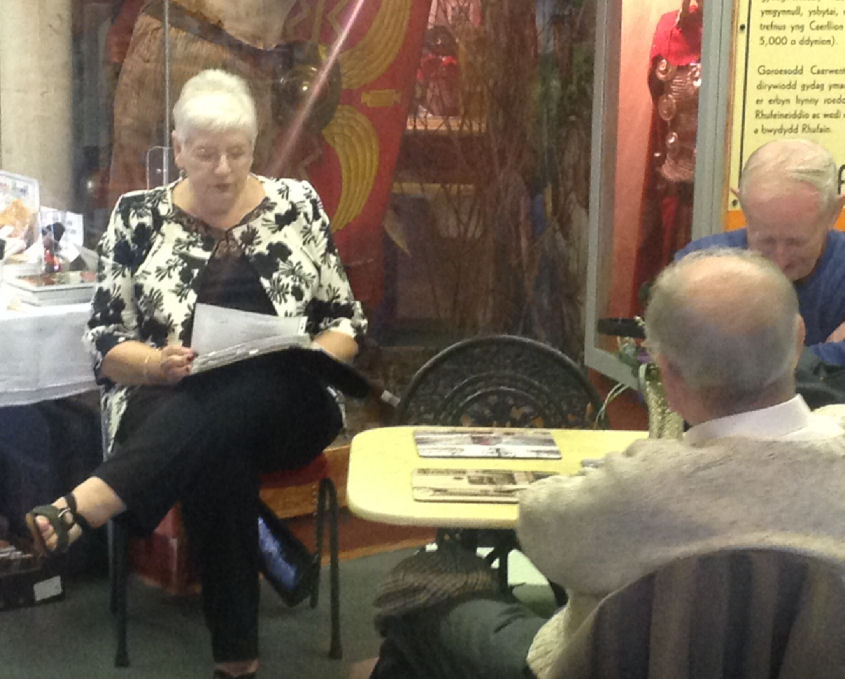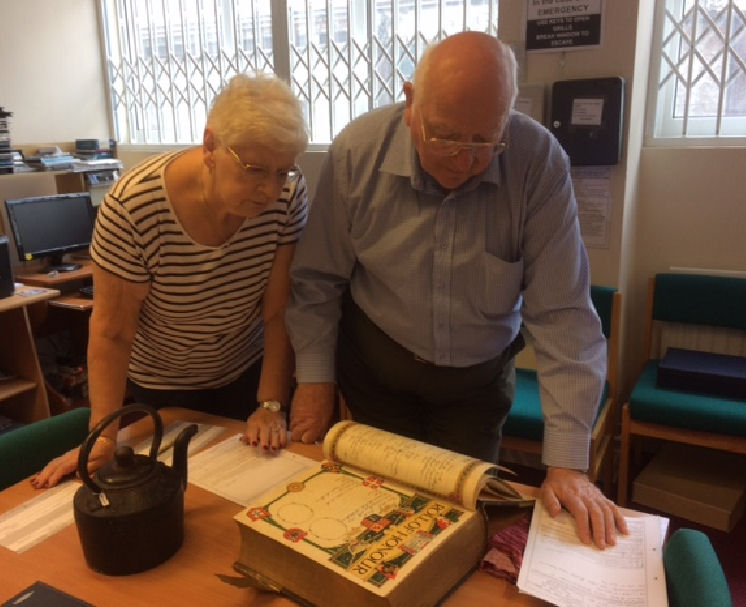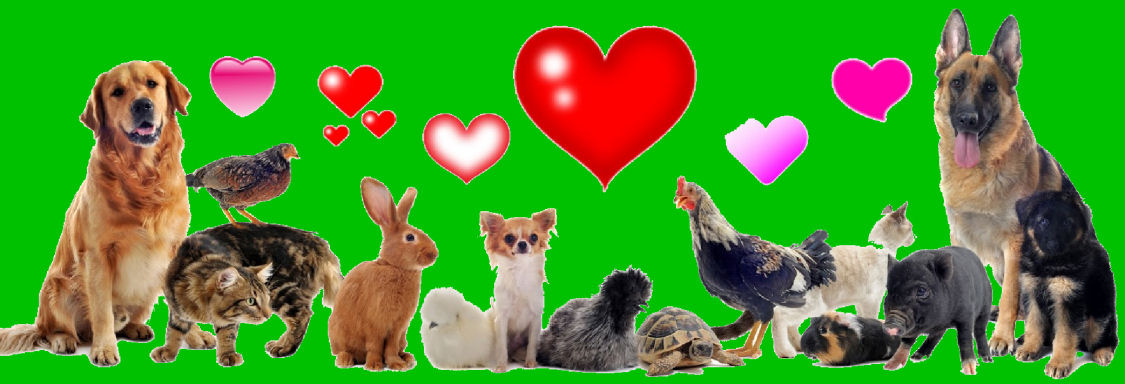Dates for your Diary
Ongoing – WW1 Exhibition in the Museum – ends 11th Nov 2018
Sat 21st Oct – Coffee Morning – Harvest Festival
August 100 Club
No. 27 Sylvia Matthews £20
No. 14 Val Sykes £10
If you would like to join our 100 club and be in with a chance of winning, it costs just £1 a month. Ask at the museum for further details.
Coffee Morning

Our recent coffee morning was very successful with good attendance and Val Rosser provided a very entertaining hour with lots of laughter!
Open Day

It was another successful open day recently with a steady stream of visitors to the museum.
British Legion Talk
The Abertillery branch of the British Legion are hosting a talk on the 2nd South Wales Borderers. It will be held at the Corner Club (51 Somerset Street) at 7pm on Monday 7th October. A buffet will follow the talk and both the talk and buffet are free of charge!
A Visit to Davy Evans Court
The Judith and Jen ‘Roadshow’ has been on the road again! This time to hear the stories of Davy Evans Court. We were asked to take objects and talk about school days to a small select group of ladies. We heard a lot of stories and had lots of laughs.
We started with ringing the school bell as every school day started. This stirred memories of having to run to school to be there to line up in the playground whatever the weather and walk smartly into school. One retired teacher remembered a novel use of the bell…ringing it in any stray dog’s ear to get them to run out of the playground.
We remembered the start of the day with the ink monitors filling the ink pots for dipping in the pens for the writing of the day. Washing them out on Fridays. Milk monitors would bring in the crates putting them by the fires or stoves in winter to warm up as they were often frozen, and then put in the straws. We had taken a third of a pint bottle with us from the museum but one lady remembered when milk was first introduced you had to pay two and a half pence a week and you got half a pint of milk at break time but only if you could pay. Milk only became free after the Second World War and then became a third of a pint.
There were no school dinners. The children who could went home. Those who lived too far away brought their own. One lady remembered dinner times in Newbridge Grammar School. It was a very formal affair. You walked into the dining room, sat at a long table and waited while the monitors went to the hatch to bring the large tureens and you helped yourself from them after grace had been said. Another remembered they always seemed to have mince and tapioca pudding and she has never eaten those since! Many were glad of the food as it was the one meal they got.
Then we remembered our schools and they were from all around Great Britain and uniforms were different. Most enjoyed their school years and music and dance classes were popular.
We brought out the cane. It was remembered being in school but most had been slapped or rapped with a ruler. One lady told us on her first day in school she had been playing in the sand with her best friend when she dropped a bucket of sand on the floor. This was swiftly followed by a slap from the teacher. Her friend seeing this grabbed the teacher and bit her arm receiving a further slap. Then screaming and crying they were marched to the head’s office. But the head must have felt sorry for them as she took them in and gave them hot chocolate and biscuits.
It was then tea and biscuit time for us, milk and one sugar thanks…!
Judith Williams
ODE TO A SPELL CHECKER
Eye halve a spelling chequer,
It came with my pea sea,
It plainly marques four review
Miss steaks I can knot sea,
I strike a quay and type a word
And weight four it two say
Weather I am wrong or rite,
It shows me right a weigh.
As soon as a mist ache is maid,
It nose bee four two long,
And eye can putt the error write;
Its rare lea ever wrong.
Eye have run this poem threw it,
And I'm shore your pleased to no,
Its letter perfect all the weigh
Bee cause my chequer told me sew!
Following the piece on ‘High Heels’ by Jen Price in last month’s newsletter, I received this:-
The things we do for fashion
In the early 1970s platform soles were the rage. I had a pair of blue leather clogs with the highest cork platform soles. Very hard to walk in but the height of fashion. As I was getting married I went to Hornsea Pottery ‘s Factory Shop and bought six large dinner plates. Walking back to the car in my clogs, along Hornsea’s sea front l fell. Nothing hurt but my pride and six smashed dinner plates!
Judith Williams
Obtiuary
Haydn Morgan, who was a Welsh international flanker and played club rugby for Abertillery has died, aged 81.
Did we land on the moon? Part two
 Last month I told you about a television programme I watched which suggested we never landed on the moon and that it was all a hoax. We looked at the evidence such as the lack of stars, the conflicting shadows and the flag waving in the wind that doesn’t exist on the moon. Now let’s delve further and look at the why and the how that the US Government might pull off a hoax...!
Last month I told you about a television programme I watched which suggested we never landed on the moon and that it was all a hoax. We looked at the evidence such as the lack of stars, the conflicting shadows and the flag waving in the wind that doesn’t exist on the moon. Now let’s delve further and look at the why and the how that the US Government might pull off a hoax...!
A cold war existed at the time between the USA and Russia. The Russians were also trying to put a man on the moon and the Americans were very worried that the Russians might get there first and set up a missile base on the moon from where they could attack the USA. Were they that desperate that they were willing to stage a hoax?
If it were all a hoax where might it be staged? In the Nevada desert is a top secret air force base known as Area 51 and it is probably the most top secret base in the world. No aircraft are even allowed to fly over it though some aerial photos of the base do exist and they show large cratered regions not unlike that of the moon’s surface. The program suggested this site as a likely contender.
A hoax of this scale would have had to involve a lot of people surely? Well obviously the astronauts would have to have known as would some top NASA officials and also some top government officials but other than those, surprisingly few would have known (or so the documentary would have us believe). After all, even those in the control room were only watching events on screens like the rest of us.
The programme pointed out that many people died during the space program. Were they in fact silenced? One of the most notable was Gus Grissom. Gus was widely tipped to be the first to walk on the moon but he was also an outspoken critic of the moon programme. On January 27th 1967 he, along with Ed White and Roger Chaffey, were burnt to death in a launch pad simulation which has never been officially explained. To this day his wife believes he was murdered.
Then just three months later on 21st April 1967, Thomas Baron, a safety expert, delivered a 500 page report to the US Congress that basically said that the space programme was in such disarray that we would never land a man on the moon. One week later Thomas Baron, along with his wife and daughter, died in a car crash. His report disappeared and has never been seen to this day.
There was one final piece of evidence presented by the programme which, for me, was probably the most difficult to ignore, and that concerned the ‘Van Allen Radiation Belt’. This belt lies 500 miles up and completely surrounds our planet. Experts believe that for humans to survive travel through this belt, our space ships would need walls made of 6 feet think lead. The Apollo moon missions had nothing like this (I have seen for myself the capsule of Apollo 14 on display at NASA and the walls are but a few inches thick) and I might add that only Apollo missions have ever supposedly carried men through this belt. All other manned craft have stayed this side of the belt. A Russian cosmonaut, Boris Volinov, claims this belt of radiation is the reason Russia gave up all attempts to reach the moon.
So, was it a 40 billion dollar hoax? Twenty percent of Americans believe it was. It is easy to prove one way or another, if we have been to the moon the evidence is still there, the flags, the moon rovers…all we need is a very powerful telescope to have a look. Unfortunately no such telescope has yet been developed. The Hubble is still the world’s most powerful telescope with a diameter of 2.4 metres but it would take a telescope of at least 75 metres in diameter to see the lunar rover, never mind the flag. And so the question remains; did we land on the moon…?
There is a wealth of evidence available on-line, both for and against. If you have internet access, below are just two of many links you may want to check out. The first link below claims there are ‘Retro-reflectors’ left on the moon’s surface from Apollo missions which we can bounce a signal off, thus proving we have been there.
The second link claims to show NASA scientists talking of how we are close (but not there yet) of finding a way to send men through the Van Allen Radiation Belt and one NASA scientist even talks very excitedly of us finally being close to being able to land a man on the moon!
The case for the moon landings being true:-
https://www.youtube.com/watch?v=VmVxSFnjYCA
and the case against;-
https://www.youtube.com/watch?v=DpPMoIv1lxI
Sally Murphy
A History of Pet Ownership

Throughout history, animals have played a key role in human life. People have come to depend on animals for food, clothing, and transportation. At many times throughout history, and in many cultures around the world, animals were also the focus of religious worship.
Although animals still maintain many of those traditional uses around the world, the role of animals in society has also changed. In the last several hundred years, there has been a massive increase in the number of animals kept purely for companionship and pleasure.
The first animal to make the transition from the wild to the domesticated state was the wolf, the common ancestor of all modern-day dogs. This occurred at least 12,000 years ago when people discovered that young wolf cubs that remained subordinate to humans as adults could be trained. From the earliest days of domestication, dogs would have had practical uses. They were kept because they could perform tasks such as hunting, guarding and herding.
A gradual change in human living from nomadic hunter to settled farmer began approximately 8,000 years ago in the Middle East. Working dogs would have been increasingly valued in this setting, but at about this time the cat also became loosely associated with humans. Houses, barns, and grain stores provided a new environmental niche that was rapidly exploited by mice and other small mammals, the favoured prey of small wild felids. Cats that followed these rodents into human settlements would have been tolerated - and possibly encouraged - because of their usefulness in getting rid of these troublesome pests.
Pet ownership by the ruling or noble classes has a long history, dating back at least as far as ancient Egyptian times. Murals from this era depict pharaohs keeping companion animals. Many generations of Chinese emperors kept dogs that, as puppies, were often suckled by human wet nurses, and as adults were tended to by their own servants. Greek and Roman nobility were also avid pet keepers.
As civilizations developed, human-animal relationships became more symbolic and less central to human life, and with this change came the view that humans had dominion over all animals. Although animals lost much of their religious and cultural importance, some animals remained closely associated with humans, but subtly, in the role of companions.
Nevertheless, the Christian church frowned on pet keeping. Church leaders suggested that the food used for these animals should be given to the poor. However, the Church was probably more afraid that close associations with animals were strongly linked to pagan worship. The prejudice against pets reached its height during the Inquisition, where evidence against heretics often included references to close associations with animals.
Pet keeping wasn't generally accepted in Europe until the end of the 17th century, and it wasn't common among the middle classes until the late 18th century. Pet keeping in its present form is probably a 19th century Victorian invention. At this time, it was perceived as a link with the natural world, which itself was no longer seen as threatening. It also allowed a visible demonstration of man's domination over nature.
Britain had been a centre for dog breeding since Roman times, and one of the first formal competitive dog shows was held in Newcastle in 1859 for the Pointer and Setter breeds. Still, little was known about the inheritance of various characteristics until Charles Darwin published The Origin of the Species in 1859. Since that time, dog breeding has become more formalized with the establishment of strict breed standards.
The practice of pet keeping in Victorian times also reflected other social attitudes of the time. Pet keeping was not considered appropriate for the "lower classes," as it was thought to encourage the neglect of other social duties.
In present-day societies, dogs have a number of functional roles, from ornamental to status symbol, as helpers, and as companions. Dogs can also act as a channel for personal expression because people express their personality in the breed they own. For example, rare breeds are often used as indicators of status. Guide dogs for blind people and hearing dogs for deaf people are examples of pets who are kept as helpers.
But the most common reason for owning pets in Western societies is companionship. In recent years, there's been a growing awareness of the very positive effects this relationship can have on human health and psychological well-being, and a recognition of the therapeutic value of companion animals.
Richard Gilson
Deputy Curator
Top Of Page


